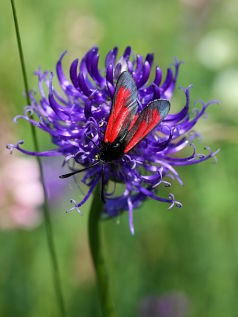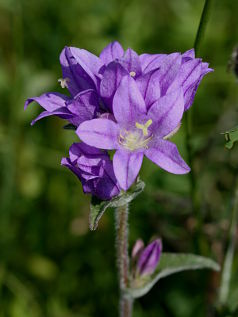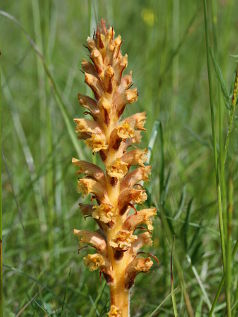Kaiserstuhl, Germany
Overview
Situated in the Rhine Rift Valley in between the Black Forest to the east and the Vosges to the west, the Kaiserstuhl is a small mountain range of volcanic origin that rises abruptly from the surrounding plains. Due to its favourable location under the influence of the Burgundian Gate, the Kaiserstuhl is one of the climatically most advantaged regions of Germany with generally mild winters and warm to hot summers. The mild climate makes the Kaiserstuhl one of the prime wine growing regions of Germany, with terraced vineyards dominating much of the landscape. It also results in a remarkable diversity of plants and animals that are usually found much further south in the Mediterranean regions of southern France and northern Italy.
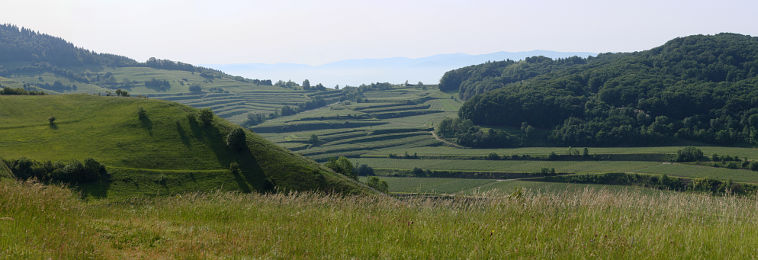
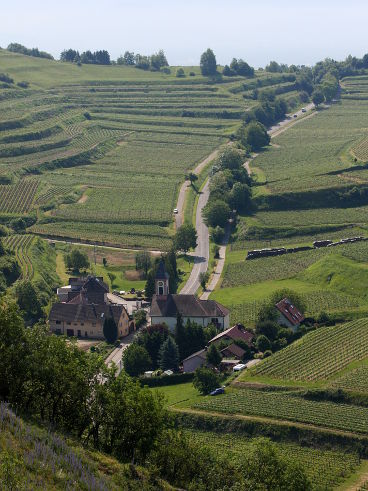
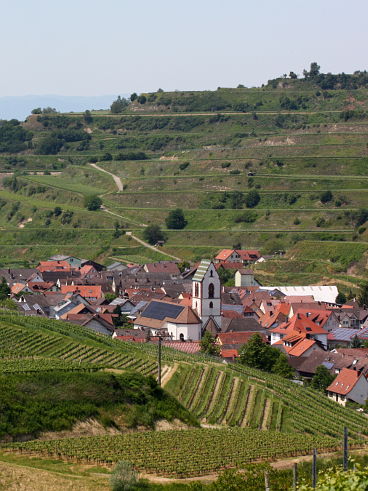
The central Kaiserstuhl is dominated by two large nature reserves, Badberg and Haselschacher Buck, which are located on two adjacent hills and are a popular destination for nature enthusiasts. Both reserves are dominated by dry, calcareous grasslands with a particularly diverse thermophile flora and fauna, including several Mediterranean species that are usually found much further south. Some of the most notable plants and animals that can be encountered at the two reserves include the thermophile Monkey Orchid (Orchis simia), several Mediterranean butterfly species such as the Woodland Grayling (Hipparchia fagi) and the Meadow Fritillary (Melitaea parthenoides), the European Praying Mantis (Mantis religiosa), a strange-looking species of owlfly called the Owly Sulphur (Libelloides coccajus), and the magnificent Eastern Green Lizard (Lacerta viridis).
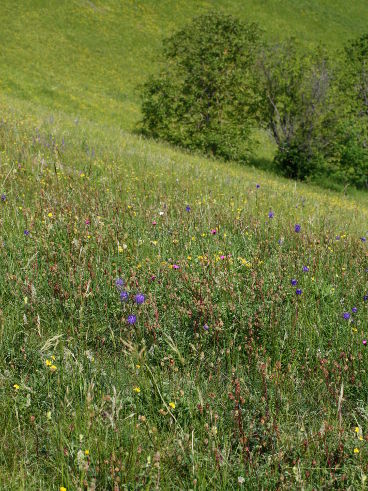
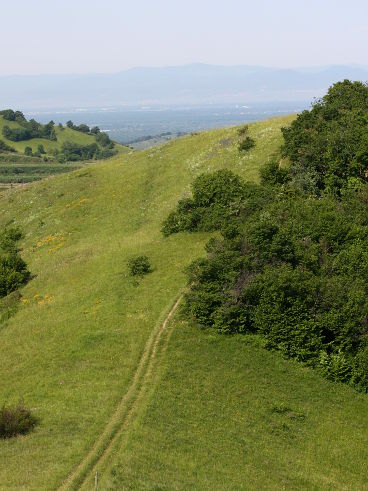
Reptiles
One of the most spectacular animals found at the Kaiserstuhl is undoubtedly the Eastern Green Lizard (Lacerta viridis). This magnificent lizard can grow up to 40 cm long and is easily identified by its size and overall green colour, often with a bright-blue throat during the mating season. On warm and sunny days it is commonly seen around the vineyards and grasslands of the central Kaiserstuhl. Originally thought to be the similar-looking Western Green Lizard (Lacerta bilineata), recent genetic studies have shown that the population of the Kaiserstuhl is actually the Eastern Green Lizard (Lacerta viridis), despite its western location.
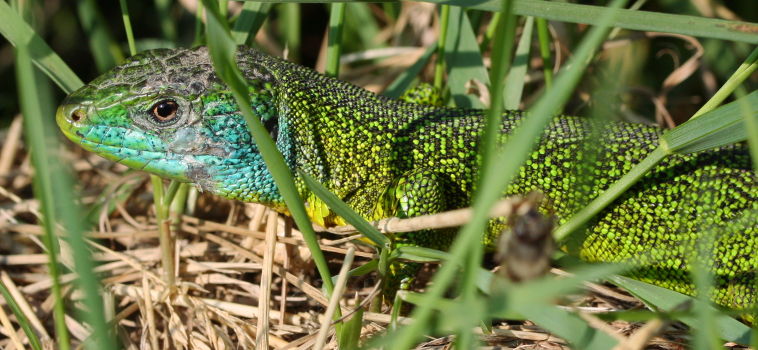
Butterflies and moths
The dry, calcareous grasslands of the central Kaiserstuhl are among the last refuges of some of the rarest and most endangered butterflies of Germany, most notably several species of Fritillary (Melitaeinae). Among the more common species is the Glanville Fritillary (Melitaea cinxia), which is still reasonably widespread across central and southern Germany. One of the great rarities is the Meadow Fritillary (Melitaea parthenoides) which is originally a western Mediterranean species found mainly on the Iberian peninsula and in southern France. The Kaiserstuhl is one of very few places in far south-western Germany where this Mediterranean butterfly can be encountered.
Another great rarity is the colourful Marsh Fritillary (Euphydryas aurinia), which was once fairly common and widespread across most of the country. However, as a result of significant changes in land use and agricultural practices, this magnificent species has seen a dramatic decline throughout the twentieth century and is now extinct across most of Germany. The Kaiserstuhl is one of very few remaining places where the Marsh Fritillary still thrives thanks to the appropriate level of legal protection combined with careful management of its remaining habitats.
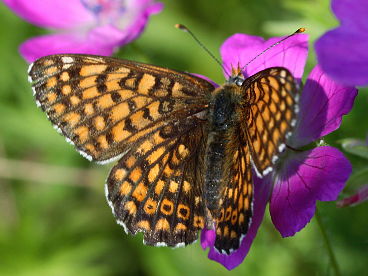
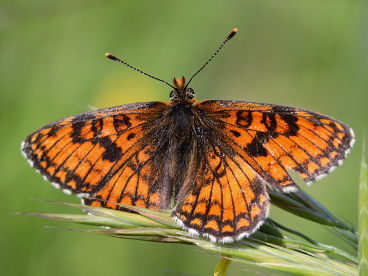
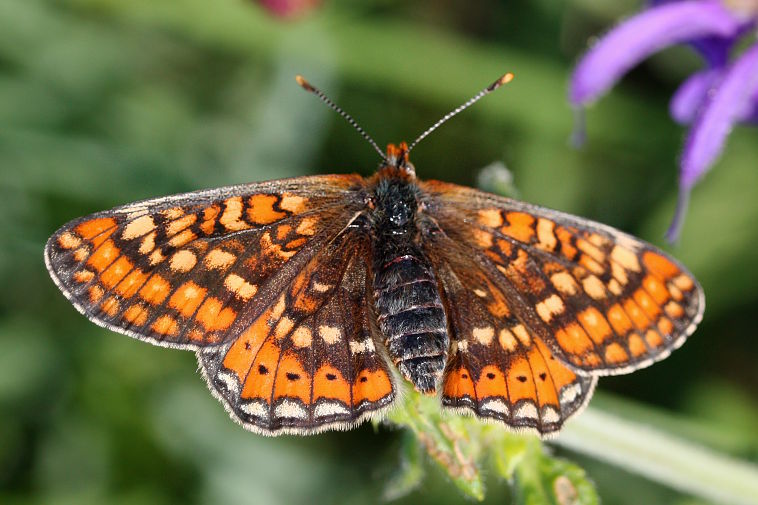
The Kaiserstuhl is also home to numerous species of Blue (Polyommatinae), some of which are rare and endangered. Among those is the Green-underside Blue (Glaucopsyche alexis), a generally rare and threatened species that is still abundant throughout the Kaiserstuhl. Another noteworthy species is Chapman’s Blue (Polyommatus thersites), an originally Mediterranean species that can be found in just a few locations north of the Alps wherever the larval food plant, the Common Sainfoin (Onobrychis viciifolia), has been established.
In addition to these rarities, several common and widespread species can be observed throughout the Kaiserstuhl in generally large numbers, including the Common Blue (Polyommatus icarus), the Brown Argus (Aricia agestis) and the Small Blue (Cupido minimus). All of these species can be found across most of Europe and are among the most common European Blues.
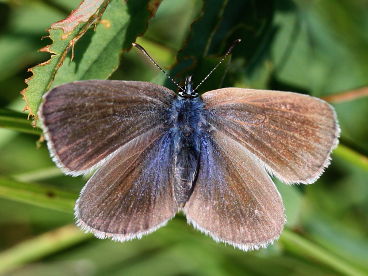
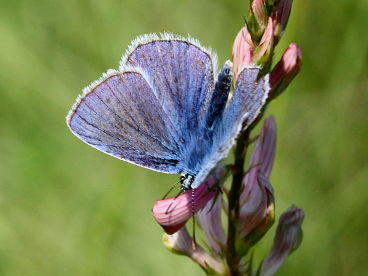
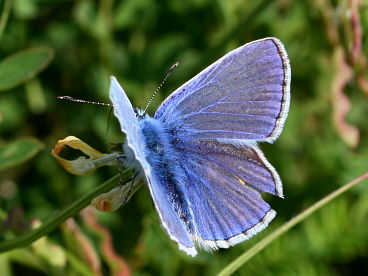
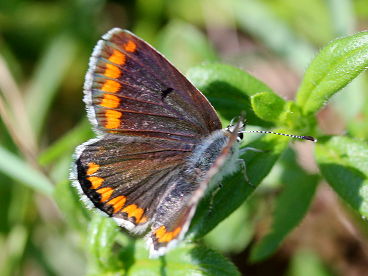
While Fritillaries and Blues are particularly well represented at the Kaiserstuhl, the region is home to numerous other butterflies and day-flying moths, including the magnificent Swallowtail (Papilio machaon), the Marbled White (Melanargia galathea), the Small Heath (Coenonympha pamphilus), the Wall Brown (Lasiommata megera), and several species of Burnet (Zygaena sp.).
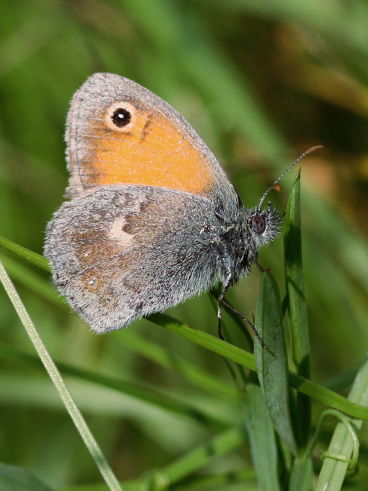
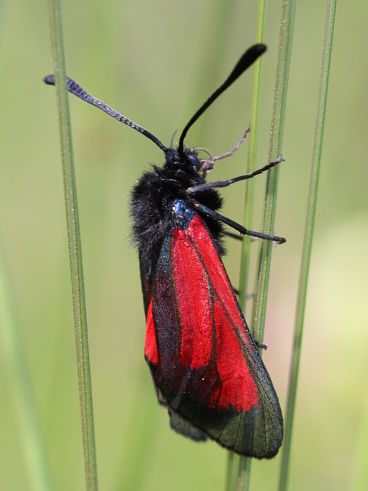
Other animals
In addition to large numbers of colourful butterflies, several other thermophile animals call the Kaiserstuhl home, including exotic insect species such as the Praying Mantis (Mantis religiosa) and the Owly Sulphur (Libelloides coccajus). Both are Mediterranean species which in central Europe can only survive in places with a particularly mild climate, although the Praying Mantis currently appears to be expanding its range as a result of climate change. The Owly Sulphur is one of just two species of Owlfly (Ascalaphidae) that occur in Germany. It looks like a mix between a butterfly and a dragonfly and can be seen flying around in large numbers on warm and sunny days.
Noteworthy beetle species include the Cockchafer (Melolontha melolontha), which can become an agricultural pest when appearing in masses, and the Green Tiger Beetle (Cicindela campestris) which can be encountered in open and dry areas. Among the gastropods, a notable species is the Large Bulin (Zebrina detrita), a land snail with a characteristic, elongated shell that occurs locally in the southern half of Germany. At the Kaiserstuhl, Large Bulins are often seen in large numbers along the edges of tracks, where they attach themselves to plant stems and leaves to estivate during periods of hot and dry weather.
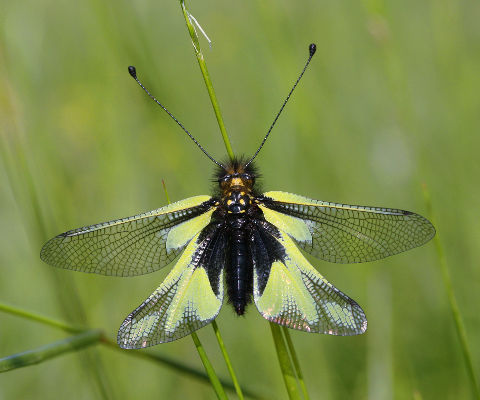
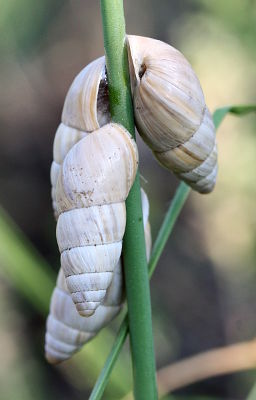
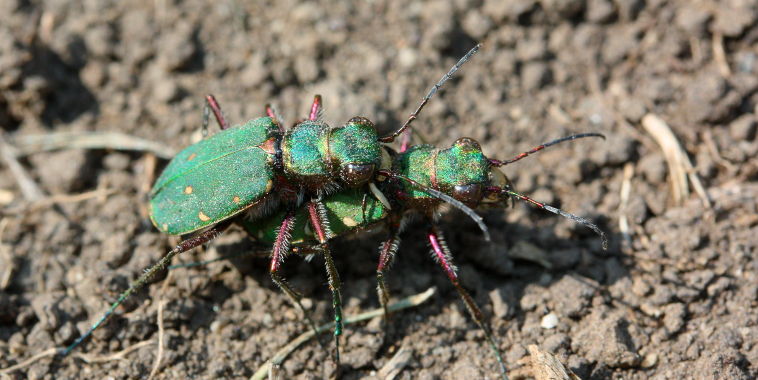
Orchids
The Kaiserstuhl is also famous for its large diversity of native orchids. More than 30 different species are known to occur in the area, making the Kaiserstuhl one of the most orchid-rich places in Germany. Some of the great rarities that can still be encountered in good numbers at the Kaiserstuhl include the Monkey Orchid (Orchis simia), the Early Spider Orchid (Ophrys sphegodes), the Late Spider Orchid (Ophrys holoserica) and the Autumn Lady’s Tresses (Spiranthes spiralis).
Among the Kaiserstuhl’s most spectacular species is the bizarre Lizard Orchid (Himantoglossum hircinum) with its long, twisted labellum. Originally restricted to the warmer regions in the southern half of Germany, Lizard Orchids have benefited from climate change and are currently expanding their range into the northern half of the country.
A common sight in late spring and early summer is the inconspicuous Pyramidal Orchid (Anacamptis pyramidalis). Its small, pink flowers are easy to miss amid the dense carpet of wildflowers covering the dry, calcareous grasslands of the central Kaiserstuhl. The common name of the species was inspired by the triangular shape of the inflorescence.
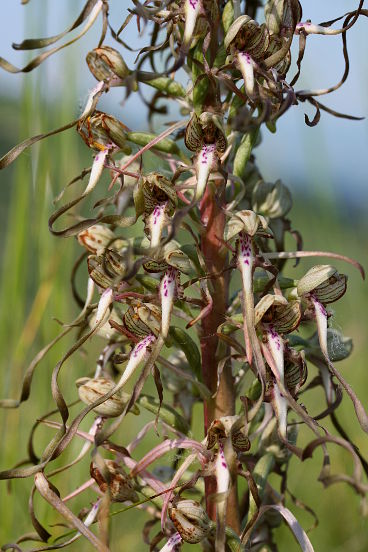
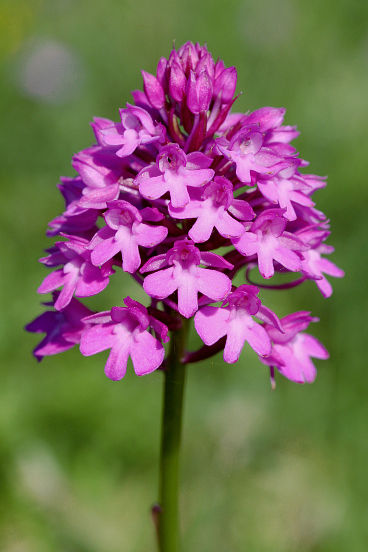
Some of the most common orchid species encountered on the calcareous grasslands of the central Kaiserstuhl include the Burnt-tip Orchid (Neotinea ustulata), the inconspicuous Fragrant Orchid (Gymnadenia conopsea) and the handsome Military Orchid (Orchis militaris) with its unusual flowers that look like tiny stick figures. The Military Orchid is known for its ability to form a spectacular hybrid, Orchis × spuria, with the Man Orchid (Orchis anthropophora).
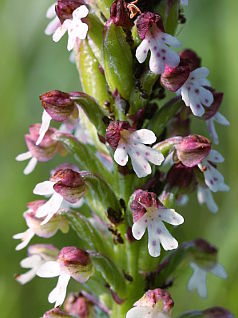
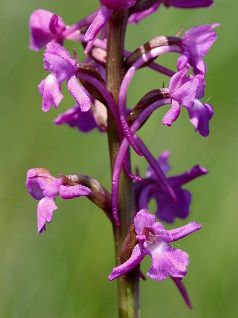
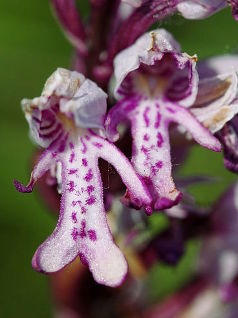
Other wildflowers
While the orchids are among the most spectacular plants to be discovered at the Kaiserstuhl, countless other wildflowers are turning the calcareous grasslands of the central Kaiserstuhl into a sea of colour during spring and summer. This, in turn, attracts a large number of insect species, resulting in the high biodiversity that the Kaiserstuhl is famous for.
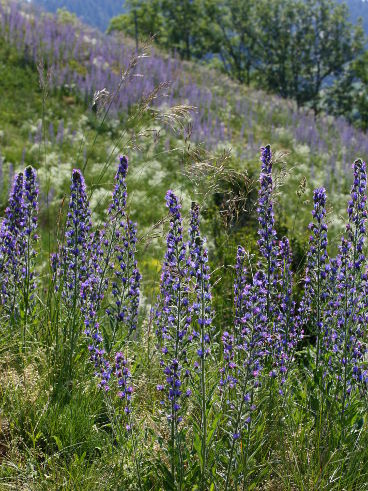
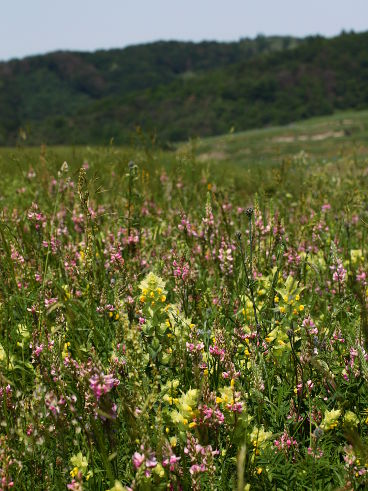
A notable wildflower species is the Common Sainfoin (Onobrychis viciifolia), originally a Mediterranean species that was introduced to central Europe by human activity in prehistoric times. It is the larval food plant of rare butterfly species such as Chapman’s Blue (Polyommatus thersites) and the Green-underside Blue (Glaucopsyche alexis), both of which occur at the Kaiserstuhl. Another interesting species is the Greater Yellow Rattle (Rhinanthus alectorolophus) which is generally abundant on calcareous grassland. It is notable for being a hemiparasitic plant that draws some of its water and nutrients from the roots of other plants.

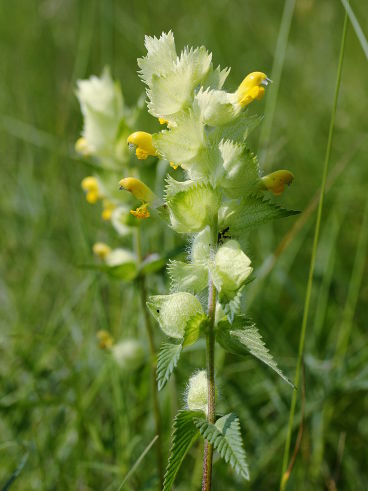
A small selection of the many other colourful wildflowers that can be found at the Kaiserstuhl is shown below. Among these is the bizarre-looking Broomrape (Orobanche sp.) which is a parasite that does not produce any chlorophyll or leaves, but obtains all of its nutrients from the roots of other plants.
